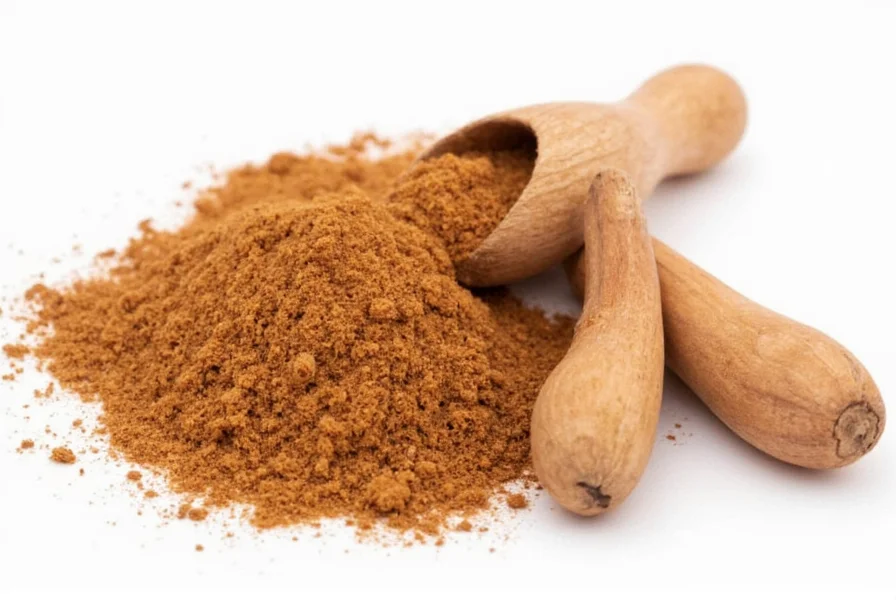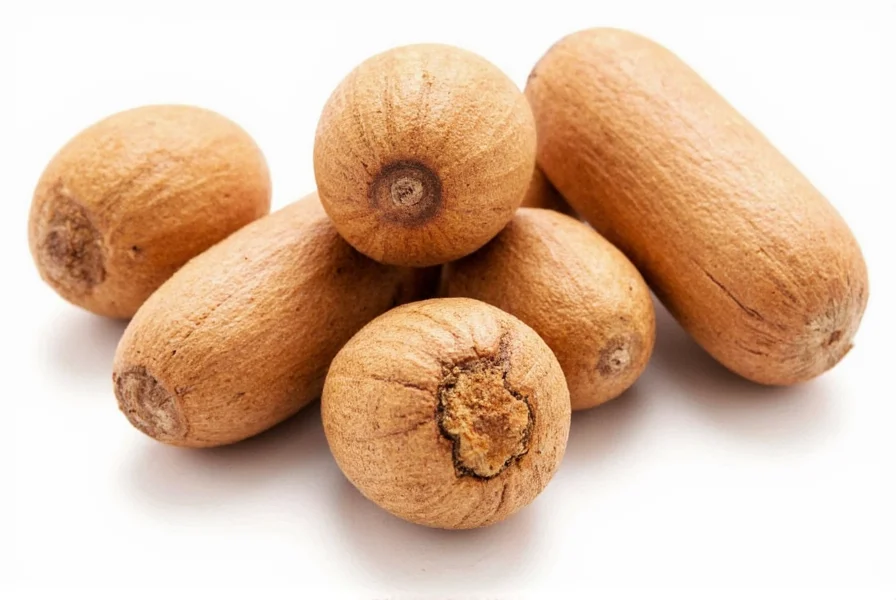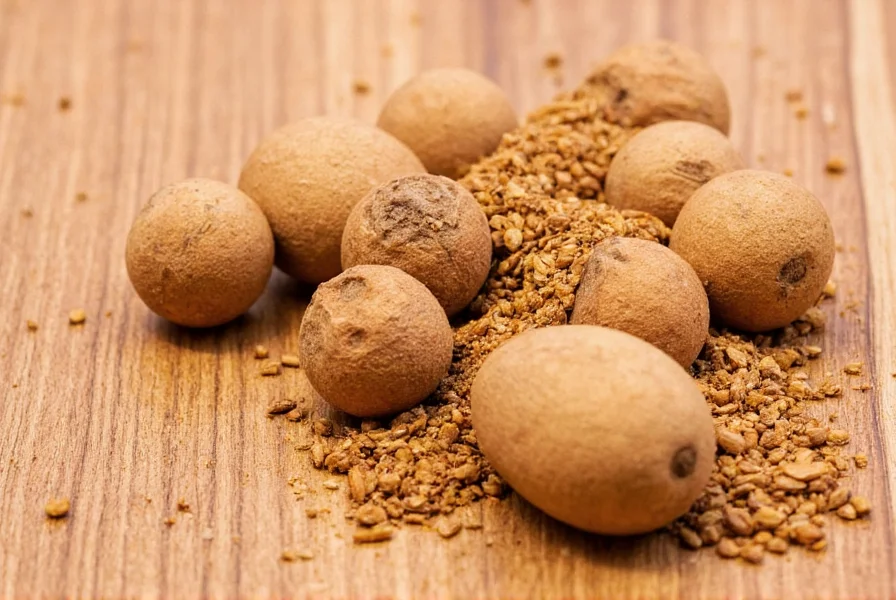Nutmeg is a warm, aromatic spice derived from the seed of the Myristica fragrans tree, a tropical evergreen native to the Banda Islands in Indonesia. When dried and ground, this hard seed kernel becomes the nutmeg spice commonly used in kitchens worldwide. Unlike many spices, nutmeg comes from a single tree species and offers a distinctive sweet, nutty flavor with subtle notes of clove and pepper that enhances both sweet and savory dishes.
Understanding what is nutmeg spice requires exploring its botanical origins and processing methods. The Myristica fragrans tree produces a fruit resembling an apricot that splits open when ripe, revealing the precious seed surrounded by a lacy red membrane. This seed becomes nutmeg spice, while the membrane transforms into mace—one of the key distinctions many home cooks misunderstand when exploring the difference between nutmeg and mace.
Botanical Origins and Harvesting Process
Nutmeg trees thrive in tropical climates with consistent rainfall and temperatures between 77-95°F (25-35°C). These slow-growing trees take seven to nine years to bear fruit and can produce for up to 60 years. Harvesters collect the ripe fruit by hand, then carefully remove the outer fleshy layer to access the seed包裹 in its crimson aril.
The seeds undergo a meticulous 6-8 week sun-drying process that transforms their color from light yellow to/WebAPI brown while concentrating their essential oils. Properly dried nutmeg kernels rattle when shaken—a traditional quality indicator still used today. This careful processing explains why fresh nutmeg spice offers significantly more complex flavor than pre-ground versions.

Nutmeg vs. Mace: Understanding the Relationship
Many people searching for what is nutmeg spice don't realize it shares its origin with mace. Both come from the same fruit but represent different components:
| Characteristic | Nutmeg | Mace |
|---|---|---|
| Source | Seed kernel | Red aril surrounding the seed |
| Flavor Profile | Warm, nutty, sweet with subtle pepper notes | More delicate, citrusy, with higher intensity |
| Color | Light to medium brown | Orange-red to amber |
| Yield per fruit | 1 nutmeg | 1 piece of mace |
Mace generally commands a higher price due to its more labor-intensive harvesting process and lower yield. When substituting between them in recipes, use approximately three parts nutmeg for every part mace, as mace has a more concentrated flavor profile.
Culinary Applications of Nutmeg Spice
The versatility of nutmeg makes it valuable across global cuisines. In European cooking, it's essential in béchamel sauce, potato dishes, and holiday recipes like eggnog and gingerbread. Indian cuisine uses it in garam masala and meat curries, while Middle Eastern dishes incorporate it into spice blends for rice and stews.
For optimal flavor when exploring nutmeg spice uses in cooking, always grate whole nutmeg fresh using a microplane. Pre-ground nutmeg loses its volatile oils quickly, diminishing both aroma and potency. A single whole nutmeg can yield approximately 2 teaspoons of freshly grated spice.
Nutritional Profile and Potential Health Benefits
While primarily used for flavor, nutmeg contains several beneficial compounds. Two teaspoons (about 4g) of ground nutmeg provides:
- 6% of daily manganese needs
- 3% of daily copper requirements
- 2% of daily vitamin B6
- Trace amounts of magnesium, potassium, and iron
Traditional medicine systems have used nutmeg for centuries to address digestive issues and as a sleep aid. Modern research suggests potential anti-inflammatory and antioxidant properties, though most studies remain preliminary. When considering health benefits of nutmeg spice, remember that therapeutic effects typically require concentrations far higher than culinary use provides.
Safety Considerations and Proper Usage
Despite its culinary safety, nutmeg contains myristicin, a compound that can cause adverse effects in large quantities. Consuming more than 1-2 teaspoons (5-10g) may lead to:
- Nausea and dizziness
- Increased heart rate
- Visual disturbances
- Delirium in extreme cases
These effects typically appear 1-6 hours after consumption and may last up to 24 hours. Pregnant women should limit nutmeg to normal culinary amounts, as high doses may stimulate uterine contractions. When exploring is nutmeg safe to consume, remember that moderate use in cooking presents no significant risks for most people.

Selection and Storage Guidelines
For the best results with how to use fresh nutmeg, select whole seeds rather than pre-ground powder. Choose nutmegs that feel heavy for their size with no cracks or blemishes. Proper storage maintains potency:
- Store whole nutmeg in an airtight container away from light and heat
- Kept properly, whole nutmeg retains quality for 2-3 years
- Ground nutmeg loses potency within 6-12 months
- Freezing extends shelf life but may introduce moisture when thawed
When evaluating nutmeg spice storage tips, remember that exposure to air, light, and humidity rapidly degrades the essential oils responsible for nutmeg's distinctive flavor.
Popular Recipes Featuring Nutmeg
Integrating nutmeg into your cooking enhances both sweet and savory dishes. Try these simple applications:
- Creamy Spinach: Sauté fresh spinach with garlic, finish with a pinch of freshly grated nutmeg
- Homemade Béchamel: Add 1/8 teaspoon nutmeg to the classic white sauce for lasagna or macaroni
- Poached Pears: Simmer pears in wine with cinnamon stick and 3 whole nutmeg seeds
For baking applications like pumpkin pie or apple crisp, use freshly grated nutmeg rather than pre-ground for noticeably brighter flavor. The difference becomes particularly apparent in custard-based desserts where nutmeg's warmth complements dairy ingredients.
Frequently Asked Questions
What is nutmeg spice made from?
Nutmeg spice comes from the seed kernel of the Myristica fragrans fruit. After harvesting, workers remove the outer fruit layer, then sun-dry the seeds for 6-8 weeks until they're ready for use as whole nutmeg or ground spice.
Can you eat raw nutmeg?
While technically edible, consuming raw whole nutmeg isn't recommended. The hard seed requires grinding for culinary use, and excessive consumption (more than 1-2 teaspoons) can cause adverse effects due to myristicin content. Always use nutmeg in normal culinary amounts.
How much ground nutmeg equals one whole nutmeg?
A single whole nutmeg (approximately 1 inch long) yields about 2 teaspoons of freshly grated nutmeg. Pre-ground nutmeg compacts differently, so 1 whole nutmeg generally equals 1.5-2 teaspoons of store-bought ground nutmeg.
Does nutmeg go bad?
Whole nutmeg maintains quality for 2-3 years when stored properly in an airtight container away from light and heat. Ground nutmeg loses potency more quickly, typically within 6-12 months. Stale nutmeg lacks aroma and delivers muted flavor in recipes.
Why is fresh nutmeg better than pre-ground?
Freshly grated nutmeg releases volatile essential oils that give it superior aroma and flavor complexity. Pre-ground nutmeg loses these compounds rapidly through oxidation and evaporation. The difference is particularly noticeable in delicate dishes like béchamel sauce or custards where nutmeg's warmth should shine through.











 浙公网安备
33010002000092号
浙公网安备
33010002000092号 浙B2-20120091-4
浙B2-20120091-4